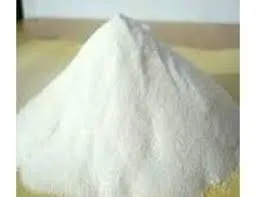
Sep . 29, 2024 02:40 Back to list
Exploring the Characteristics and Applications of HPMC in Various Industries
Exploring HPMC Properties A Comprehensive Overview
Hydroxypropyl Methylcellulose (HPMC) is a widely used polymer derived from natural cellulose. Its unique properties and versatility make it an essential ingredient in various industries, including pharmaceuticals, food, construction, and personal care products. Understanding the properties of HPMC is crucial for optimizing its applications and enhancing product formulations.
One of the most significant properties of HPMC is its film-forming ability. This characteristic is particularly vital in the pharmaceutical industry, where HPMC is used to create controlled-release drug formulations. The polymer can form a gel-like matrix that regulates the release of active pharmaceutical ingredients (APIs), ensuring a sustained therapeutic effect. This controlled release mechanism not only improves patient compliance but also enhances the bioavailability of drugs.
Exploring HPMC Properties A Comprehensive Overview
Water solubility is another critical feature of HPMC. While it is soluble in cold water, it forms a gel in hot water, making it an ideal choice for different applications. In the pharmaceutical sector, this property allows for the effective formulation of tablets and granules, which require a specific dissolution profile. In the construction industry, HPMC is used as an additive in cement and mortar to enhance workability and water retention, ensuring better adhesion and flexibility in building materials.
hpmc properties

Moreover, HPMC exhibits excellent adhesive properties, which make it suitable for use in glue formulations and coatings. Its ability to adhere to various surfaces without compromising the integrity of the materials highlights its role in product formulation across different domains. In personal care products, HPMC is often used in skin creams and lotions for its emulsifying properties, helping to blend oil and water phases seamlessly.
Thermal stability is another advantageous property of HPMC. It can withstand a wide range of temperatures without significant degradation. This thermal stability is beneficial in applications involving heat, such as in the production of baked goods where high temperatures are prevalent.
HPMC is also favored for its compatibility with a variety of substances, including other polymers, active ingredients, and excipients. This compatibility ensures that formulators can create complex products without worrying about adverse interactions, making HPMC a highly versatile choice in various industries.
Finally, HPMC is known for its biodegradability, which is an essential consideration in today's environmentally conscious market. As the demand for sustainable and eco-friendly products rises, HPMC serves as an attractive alternative to synthetic polymers.
In summary, the diverse and advantageous properties of HPMC, including its film-forming ability, thickening capacity, water solubility, adhesive characteristics, thermal stability, and biodegradability, position it as a valuable ingredient across multiple sectors. As technology evolves and new applications emerge, HPMC will likely continue to play a pivotal role in enhancing product efficacy and sustainability. Understanding these properties not only paves the way for innovative formulations but also contributes to advancing the industries that rely on this remarkable polymer.
-
Versatile Hpmc Uses in Different Industries
NewsJun.19,2025
-
Redispersible Powder's Role in Enhancing Durability of Construction Products
NewsJun.19,2025
-
Hydroxyethyl Cellulose Applications Driving Green Industrial Processes
NewsJun.19,2025
-
Exploring Different Redispersible Polymer Powder
NewsJun.19,2025
-
Choosing the Right Mortar Bonding Agent
NewsJun.19,2025
-
Applications and Significance of China Hpmc in Modern Industries
NewsJun.19,2025







